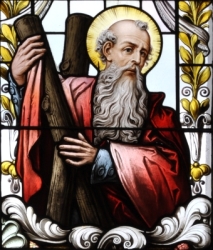
| 30 November |
• yesterday • tomorrow |
| Feast of Saint Andrew, Apostle |

• Andrew the Protoclete
• Andreas, Endres
9 May (translation of relics)
The first Apostle. Fisherman by trade. Brother of Simon Peter. Follower of John the Baptist. Andrew went through life leading people to Jesus, both before and after the Crucifixion. Missionary in Asia Minor and Greece, and possibly areas in modern Russia and Poland. Martyred on an saltire (x-shaped) cross, he is said to have preached for two days from it.
Some peculiar marriage-related superstitions have attached themselves to Saint Andrew's feast day.
• An old German tradition says that single women who wish to marry should ask for Saint Andrew's help on the eve of his feast, then sleep naked that night; they will see their future husbands in their dreams.
• Another says that young women should note the location of barking dogs on Saint Andrew's Eve: their future husbands will come from that direction.
• On the day after Andrew's feast, young people float cups in a tub; if a boy's and a girl's cup drift together and are intercepted by a cup inscribed "priest", it indicates marriage.
There are several explanations for why Andrew became the patron of Scotland.
• In 345, Emperor Constantine the Great decided to translate Andrew's bones from Patras, Greece to Constantinople. Saint Regulus of Scotland was instructed by an angel to take many of these relics to the far northwest. He was eventally told to stop on the Fife coast of Scotland, where he founded the settlement of Saint Andrew.
• In the 7th century, Saint Wilfrid of York brought some of the saint's relics with him after a pilgrimage to Rome, Italy. The Scots king, Angus MacFergus, installed them at Saint Andrew's to enhance the prestige of the new diocese.
• When the Pictish King Angus faced a large invading army, he prayed for guidance. A white cloud in the form of a saltire cross floated across the blue sky above him. Angus won a decisive victory, and decreed that Andrew would be the patron saint of his country. Following Robert Bruce's victory at the Battle of Bannockburn in 1314, the Declaration of Arbroath officially named Saint Andrew the patron saint of Scotland. The Saltire became the national flag of Scotland in 1385.
at Bethsaida, Galilee
• crucified on a saltire (x-shaped) cross in Patras Greece
• relics destroyed c.1559 by Protestants
• against convulsions
• against fever
• against gout
• against neck pain
• against sore throats
• against whooping cough
• anglers, fishermen
• boatmen, mariners, sailors,watermen
• butchers
• farm workers
• fish dealers, fish mongers
• happy marriages
• miners
• pregnant women
• rope makers
• sail makers
• single lay women
• singers
• textile workers
• unmarried women
• water carriers
• women who wish to become mothers
• Karadordevic dynasty
• Knights of the Golden Fleece
• Spanish armed forces
• University of Patras
• Austria
• Germany
• Greece
• Luxembourg
• Netherlands
• Romania
• Russia
• Scotland
• Spain
• Bithynia, Asia Minor
• Lower Austria, province of
• 5 dioceses
• 53 cities
• fish
• fishing net
• man bound to a cross
• man preaching from a cross
• old man with long white hair and a beard, holding the Gospel in his right hand, and leaning on a transverse cross
• preacher holding some fish
• Saint Andrew's cross
• saltire (x-shaped) cross; some stories say it was may that way, others that it was a Latin cross, but fell over, and his killers just left it propped up on one of the cross-arms
After Andrew had stayed with Jesus and had learned much from him, he did not keep this treasure to himself, but hastened to share it with his brother Peter. Notice what Andrew said to him: "We have found the Messiah, that is to say, the Christ." Notice how his words reveal what he has learned in so short a time. They show the power of the master who has convinced them of this truth. Andrew's words reveal a soul waiting with the utmost longing for the coming of the Messiah, looking forward to his appearing from heaven, rejoicing when he does appear, and hastening to announce to great an event to others. To support one another in the things of the spirit is the true sign of good will between brothers, loving kinship and sincere affection. - from a homily on the Gospel of John by Saint John Chrysostom
https://catholicsaints.info/saint-andrew-the-apostle/
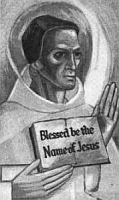
John Garbella
Studied at the University of Paris. Doctor of civil and canon law. Taught law at Paris and Vercelli, Italy. Helped found a university in Vercelli.
Dominican Friar, joining in Vercelli, and receiving the habit from Blessed Jordan of Saxony, whose preaching had brought him to the Order. Transferred to Bologna, Italy to study the history and theology of the Order and for the priesthood. Ordained in 1229. Noted preacher in Bologna.
John returned to Vercelli in 1232 to establish a Dominican priory, and to serve as its superior. Peacemaker between Venice and other Papal States. Prior of the Dominican house in Bologna, and spiritual director to its nuns. Dominican Provincial of Lombardy in 1257. Fought heresies in northern Italy. Friend of King Saint Louis IX, and often consulted Saint Thomas Aquinas on theological matters.
Master-general of the Dominicans from 1264 to 1283. Insured uniform liturgical celebration throughout the Order. Served at the papal court of Pope Clement IV. Considered for the papacy after the death of Clement; when he learned of this, he fled the city. Pope Gregory X was elected instead.
Papal legate. Peacemaker between Venice and Genoa. Peacemaker between France and Castile. Commissioned by the pope to draw up the schema for the Second Council of Lyons, and actively participated in the Council. In 1274 he founded what eventually became the Holy Name Society (Confraternity of the Most Holy Name of God and Jesus). Appointed archbishop of Jerusalem in 1278, but begged to be released from the responsibility, citing advanced age, ill health, and the need for strong, vital leadership in the war-ravaged region.
Tradition says that during the translation of the relics of Saint Dominic de Guzman 1267, when the body was exposed to view, the head was seen to turn towards Blessed John. Embarrassed, John moved to another part of the church, giving his place to a cardinal. The head of Saint Dominic was seen by all to turn again toward John.
1205 at Mosso Santa Maria, Italy as John Garbella
• 30 November 1283 at Montpelier, France of natural causes
• buried at the Dominican convent at Montpelier
• his tomb was desecrated by Calvinists in 1562, and his body disappeared
1903 by Pope Pius X (cultus confirmed)
Holy Name Society
God of power and mercy, you made Blessed John an outstanding promoter of the order of Preachers. By his remarkable zeal, his wonderful prudence and his courage, and with the help of his prayers may your family always and everywhere be governed by beneficial rule. We ask this through our Lord Jesus Christ, your Son, who lives and reigns with you and the Holy Spirit, one God, for ever and ever. - General Calendar of the Order of Preachers
Watch the little things. He who grows careless in little things, little by little falls. He who does not push himself to make progress, goes backward. - Blessed John, writing to his priests
Desirous of protecting the honor of God, of obeying this apostolic command, and of promoting in our neighbor an increase in devotion, we beseech you to stir up your zeal to the end that you personally see to it that this request of the Holy Father receives full compliance by having your subjects preach with convincing arguments and with scrupulous diligence the need for reverencing the Holy Name. - Blessed John, writing on the creation of the Holy Name Society
https://catholicsaints.info/blessed-john-of-vercelli/
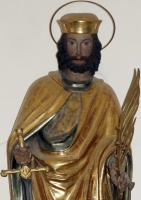
• Castulus of Moosburg
• Castolo, Castulo, Catulus, Kastl, Kastulis, Kastulus
Married to Saint Irene of Rome. Military officer in the imperial palace in Rome during the reign of Emperor Diocletian. A quiet Christian, he was denounced to authorities for sheltering fellow Christians; arrested, tortured and martyred.
• buried alive in 288 on the Via Labicana outside Rome, Italy
• a cemetery named for him developed on the land
• a church dedicated to him was built in the 7th century on the site of his execution
• relics transferred to a Benedictine monastery in Moosburg an der Isar, Germany c.768
• relics transferred to Landshut, Germany in 1604
• against blood poisoning
• against drowning
• against erysipelas
• against fever
• against horse theft
• against lightning
• against storms
• against wildfire
• cowherds
• farmers
• shepherds
• Hallertau, Germany
• Moosburg an der Isar, Germany
spade a reference to being buried alive; it and his feast day in early spring led to his association with farmers and then shepherds
https://catholicsaints.info/saint-castulus-of-rome/
• Everard of Commed
• Everard of Chumbd
• Everard of Comeda
• Eberhard of...
Born to the nobility, the youngest son of Wolfram of family of the counts of Stahleck in modern Germany. Page in the court at Heidelberg, Germany. In his early teens, Everard felt a call to religious life and tried three times to enter the Cistercian abbey of Schönau near Heidelberg, but was refused as being too young and uneducated. At age 16 he built himself a hermitage at Chumbd, Simmern, Hunsrück, diocese of Mainz, Germany and retired there from the world. Helped found a convent of Cistercian nuns at Chumbd (Comeda; Kumbd), Germany in 1183. Cistercian monk. Sub-deacon. Spiritual director of the nuns of Chumbd. Two of his sisters became nuns there, and a brother joined the Cistercians as a lay brother.
1165 in the Stahleck castle, Bacharach, Rhineland-Palatinate (in modern Germany)
• 30 November 1191 in the monastery of Chumbd, Germany of natural causes
• buried the at the church of Saint Mary at the monastery of Chumbd
• relics transferred to Himmerod Abbey in Großlittgen, Germany when the abbey at Comeda was suppressed in 1566
• relics have since disappeared
https://catholicsaints.info/blessed-everard-of-stahleck/
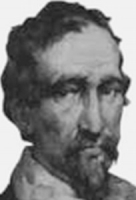
• 25 October as one of the Forty Martyrs of England and Wales
• 29 October as one of the Martyrs of Douai
• 1 December as one of the Martyrs of Oxford University
Raised a Protestant by his uncle, a schimastic priest. Ordained as a Anglican minister at age 19. Friend of Saint Edmund Campion. He converted to Catholicism in 1570 while a student at Saint John's College, Oxford. Studied and ordained at Douai, France, the first Englishman trained there. Ordained and returned to England in 1575 with Saint John Payne to minister to covert Catholics in Cornwall. Arrested in 1576, condemned and martyred for the crime of being a priest. Proto-martyr of English seminaries.
1544 at Youlston, Devonshire, England
• hanged, drawn, and quartered on 30 November 1577
• relics at the Carmelite convent, Lanherne, Cornwall, England
• 29 December 1886 by Pope leo XIII (cultus confirmation)
• 4 May 1970 by Pope Paul VI (decree of martyrdom)
25 October 1970 by Pope Paul VI
https://catholicsaints.info/saint-cuthbert-mayne/
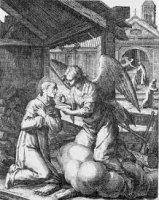
Friedrich
Born to a poor family. Skilled carpenter. Member of the Order of Hermits of Saint Augustine. Noted for his obedience to the Rule of his Order, his piety, the fervor of his prayer life and devotion to Eucharistic Adoration.
late 13th century in Regensburg, Bohemia (in modern Germany)
• 30 November 1329 in Regensburg, Bohemia (in modern Germany) of natural causes
• buried at the parish of Saint Cecilia at the Augustinian house in Regensburg
• grave re-discovered during construction in 1911, and relics enshrined in the church of Saint Cecilia
12 May 1909 by Pope Pius X (cultus confirmation)
• Augustinian hermit surrounded by 12 medallions (representing 12 miracles traditionally performed by him)
• Augustinian hermit with an ax and/or carpenter's tools
• Augustinian hermit with an angel
• Augustinian hermit chopping wood
• Augustinian hermit receiving Communion from an angel
https://catholicsaints.info/blessed-frederick-of-regensburg/
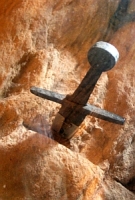
• Galganus Guidotti
• Galgano
Galgano led a worldly life in his youth, but converted and became a hermit on Monte Siepe in Tuscany, Italy. A church built on the site of his hermitage in 1196 was turned over to the Cistercians in 1201, and they claimed Galgano as one of their own.
Legend says his conversion was caused by a visit from the Archangel Michael. After the vision he said giving up his former lifestyle would be as easy as cutting rocks with a sword. To emphasize this sarcastic remark, he drew his weapon and thrust at a stone, expecting the blade to snap; the sword buried into the rock up to the hilt, and Galganus changed his life.
1148 at Chiusdino, Siena, Italy as Galgano Guidotti
1181 at Monte Siepe, Tuscany, Italy
1185 by Pope Lucius III
https://catholicsaints.info/saint-galganus/
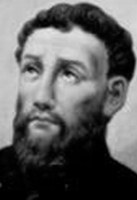
24 November as one of the Martyrs of Vietnam
Seminarian in Orsan in 1821. Priest. Studied at the Paris Society of Foreign Missions. Missionary to Annam, Vietnam in 1830. In 1832 he was offered the position of head of the Foreign Mission Seminary in Paris, but declined to continue his work in the field. Transferred to the province of Binh-Thuean. In 1833 a royal decree ordered the arrest of all European missionaries. Father Joseph was arrested and imprisoned in Saigon for 18 months. He was caged, tortured, mutilated and finally murdered. Martyr.
17 August 1803 at Passavant, Doubs, diocese of Besancon, France
• flesh ripped from his body with red hot tongs on 30 November 1835 at Tho Ðuc, Saigon, Vietnam
• his body was chopped into pieces and thrown into the sea
19 June 1988 by Pope John Paul II
https://catholicsaints.info/saint-joseph-marchand/
12 June as one of the 108 Martyrs of World War II
Ordained a priest in 1927 in the archdiocese of Czestochowa, Poland. He was a dedicated teacher, catechist and youth minister. Director of the episcopal Latin school in Wielun, Poland. Priest in the parish of Saint Thecla in Raczyn, Poland. Youth minister and catechist. One of many priests arrested together in the area of Wielun on 6 October 1941. Imprisoned, deported, tortured and finally martyred in the Nazi persecutions of World War II.
16 August 1904 in Zarki, Slaskie, Poland
tortured and abused to death on 30 September 1941 in the Dachau concentration camp, Oberbayern, Germany
13 June 1999 by Pope John Paul II at Warsaw, Poland
https://catholicsaints.info/blessed-ludwik-roch-gietyngier/
Pabu, Tugdual, Tugual, Tual
Son of King Hoel I and Saint Koupaïa; cousin of King Deroc of Dumnonia. Monk in Wales. Friend and co-worker with Saint Briarch. Evangelized in Brittany. Founded the monastery of Lan Pabu at Leon, Spain. Bishop of Tréguier (Treher), Brittany. Advisor to King Childebert I. Several sites in the Leyn Peninsula of Wales bear his name.
6th century Welsh
• c.564
• relics claimed by French churches in Tréguier, Laval, and Chartres
• Herm
• Tréguier, France
bishop using his stole as a leash on a dragon
https://catholicsaints.info/saint-tudwal-of-treguier/
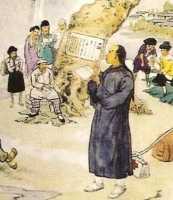
Tadou
Priest, ordained at age 35, he spent his ministry walking from village to village, ministering to Christians and spreading the faith. Arrested on Pentecost 1821, he was tortured and then imprisoned for two years before his sentence was finally handed down. Martyr.
c.1773 in Qunglai County, Sichuan, China
strangled to death on 30 November 1823 at the temple in Quxian, Sichuan, China
1 October 2000 by Pope John Paul II
https://catholicsaints.info/saint-thaddeus-liu-ruiting/
Early 13th-century priest at Saint Peter's Church, Slagalse, Denmark. While on pilgrimage in the Holy Lands he received a vision of a man on a white horse who miraculously transported him home so that he could celebrate Easter with his parishioners. The rider then transported him to shrine of Santiago de Campostella in Spain, and then to the shrine of Saint Olaf in Norway. Upon his return to Slagalse, Anders was able to heal the lame and blind by prayer.
12th-century Slagelse, Denmark
c.1205 of natural causes
Slagelse, Denmark
https://catholicsaints.info/saint-anders-of-slagelse/
• Joscius of Saint Bertin
• Josbert, Joscio, Valbebertus
Benedictine monk at Saint Bertin Abbey, diocese of Arras, France. Renowned for his devotion to Our Lady.
• 1186 of natural causes
• legend says that a rose tree grew from the mouth of his corpse, and that the name "Mary" was found on the petals of its flowers
Benedictine with roses sprouting from his mouth, eyes and ears, the word "Maria" near him
https://catholicsaints.info/blessed-joscius-roseus/
• 29 October as one of the Martyrs of Douai
• 22 November as one of the Martyrs of England, Scotland, and Wales
Cobbler. Priest in the apostolic vicariate of England. Martyred in the persecutions of Queen Elizabeth I.
c.1550 in Howden, East Riding of Yorkshire, England
30 November 1586 in York, North Yorkshire, England
22 November 1987 by Pope John Paul II
https://catholicsaints.info/blessed-alexander-crow/
Bishop of Beth-Seleucia, he was known for the number of converts he brought to the faith. Denounced for interfering with the Persian star worship, and suspected of treasonous collaboration with Roman authorities, he was arrested in 339. Tried before King Shapur II, they were given the chance to save themselves by denouncing their faith; they declined. Martyr.
4th century Persian
beaten to death in 339 in Persia
https://catholicsaints.info/saint-isaac-of-beth-seleucia/
Shapur
Bishop of Beth-Nictor, he was known for the number of converts he brought to the faith. Denounced for interfering with the Persian star worship, and suspected of treasonous collaboration with Roman authorities, he was arrested in 339. Tried before King Shapur II, they were given the chance to save themselves by denouncing their faith; they declined. Martyr.
4th century Persian
stoned to death in 339 in Persia
https://catholicsaints.info/saint-sapor/
Brother of Saint Tarbula. Convert. Denounced for suspected treasonous collaboration with Roman authorities and Christianity in general, he was arrested in 339. Tried before King Shapur II, they were given the chance to save themselves by denouncing their faith; they declined. Martyr.
4th century Persian
flayed alive in 339 in Persia
https://catholicsaints.info/saint-simeon-of-persia/
Convert. Denounced for suspected treasonous collaboration with Roman authorities and Christianity in general, he was arrested in 339. Tried before King Shapur II, they were given the chance to save themselves by denouncing their faith; they declined. Martyr.
4th century Persian
flayed alive in 339 in Persia
https://catholicsaints.info/saint-mahanes-the-persian/
Convert. Denounced for suspected treasonous collaboration with Roman authorities and Christianity in general, he was arrested in 339. Tried before King Shapur II, he was given the chance to save himself by denouncing his faith; he declined. Martyr.
4th century Persian
flayed alive in 339 in Persia
https://catholicsaints.info/saint-abraham-of-persia/
Augustinian canon regular at the Holy Sepulchre in Jerusalem. Travelled to Europe to collect funds for the Eastern houses of his order. Had a great reputation for personal holiness.
1268 in Antioch, Syria
27 March 1348 at Annecy, Savoy (part of modern France)
https://catholicsaints.info/blessed-andrew-of-antioch/
Creda
Daughter of an Irish chieftain. Nun. Friend of Saint Canice of Aghaboe.
Ireland
mid-7th century of natural causes
Creed, Cornwall, England
nun with crown and scepter
https://catholicsaints.info/saint-crider-of-cornwall/
Virgin martyr. No details of her life have survived. An island in the Ionian Sea is named for her. Devotion was widespread in the East. Julian the Apostate unsuccessfully tried to suppress devotion to her.
at Constantinople (modern Istanbul, Turkey)
https://catholicsaints.info/saint-maura-of-constantinople/
Merocles, Mirocleto
Archbishop of Milan, Italy. Writer. Attended the Council of Rome in 313. One of the originators of the Ambrosian liturgy and chant. His life and works were praised by Saint Ambrose of Milan.
c.318 of natural causes
https://catholicsaints.info/saint-mirocles-of-milan/
Troyen
His father was Jewish, his mother was Arabic, and Trojan was an adult convert to Christianity. Priest. Student of Saint Vivien. Beloved bishop of Saintes, France.
533
https://catholicsaints.info/saint-trojan/
Benedictine monk at San Niccolo dell' Arena. Abbot at Maniaco, assigned to restore discipline.
Catania, Sicily
1423 of natural causes
https://catholicsaints.info/blessed-william-de-paulo/
Zosimus of Palestine
Hermit at Palestine. Miracle worker.
6th century of natural causes
https://catholicsaints.info/saint-zosimus-the-wonder-worker/
Benedictine monk at Saint-Nicaise Abbey, Rheims, France. Abbot of Gemblours Abbey in Belgium.
1155 of natural causes
https://catholicsaints.info/blessed-arnold-of-gemblours/
Priest in Rome, Italy. Opposed Pelagianism, and murdered by its adherents.
c.418 at Rome, Italy
https://catholicsaints.info/saint-constantius-of-rome/
Martyred maiden.
at Constantinople
https://catholicsaints.info/saint-justina-of-constantinople/
Merula
Martyr.
c.400 in Antioch, Syria
https://catholicsaints.info/saint-merola-of-antioch/
Martyr.
c.400 in Antioch, Syria
https://catholicsaints.info/saint-domninus-of-antioch/
Martyred in Rome, Italy.
https://catholicsaints.info/saint-euprepis-of-rome/
Missionaries who worked with Saint Willehad of Bremen. Martyrs. - Attroban, Benjamin, Emmingen, Folkard, Gerwald and Grisold.
30 November 782 at River Weser, Lawer Saxony, Germany
https://catholicsaints.info/martyrs-of-saxony/
Thousands of people were murdered in the anti-Catholic persecutions of the Spanish Civil War from 1934 to 1939. I have pages on each of them, but in most cases I have only found very minimal information. They are available on the CatholicSaints.Info site through these links:
• Blessed Agustín Renedo Martín
• Blessed Amado Cubeñas Díaz-Madrazo
• Blessed Antonio Martínez Gil-Leonis
• Blessed Arturo Donoso Murillo
• Blessed Arturo García de la Fuente
• Blessed Benito Garnelo Álvarez
• Blessed Benito Rodríguez González
• Blessed Benito Velasco y Velasco
• Blessed Bernardino Calle Franco
• Blessed Conrado Rodríguez Gutiérrez
• Blessed Constantino Malumbres Francés
• Blessed Dámaso Arconada Merino
• Blessed Dionisio Terceño Vicente
• Blessed Emiliano Santamaría Angulo
• Blessed Esteban García Suárez
• Blessed Francisco Fuente Puebla
• Blessed Francisco Marcos Del Río
• Blessed Gerardo Gil Leal
• Blessed Gerardo Pascual Mata
• Blessed Gregorio Álvarez Fernández
• Blessed Heliodoro Merino y Merino
• Blessed Isidro Mediavilla Campos
• Blessed Jesús Gesta Piquer
• Blessed Jesús Largo Manrique
• Blessed Joaquín García Ferrero
• Blessed José Agustín Fariña Castro
• Blessed José Antonio Pérez García
• Blessed José Gando Uña
• Blessed José López Piteira
• Blessed José Noriega González
• Blessed José Otín Aquilué
• Blessed Josep Maria Dalmau Regás
• Blessed Juan Monedero Fernández
• Blessed Juan Peña Ruiz
• Blessed Juan Sánchez y Sánchez
• Blessed Julián Zarco Cuevas
• Blessed Julio Marcos Rodríguez
• Blessed Julio María Fincias
• Blessed León Alesanco Maestro
• Blessed Luis Abia Melendro
• Blessed Luis Palacios Lozano
• Blessed Luis Suárez-Valdés Díaz de Miranda
• Blessed Macario Sánchez López
• Blessed Manuel Miguel Sánchez
• Blessed Marcos Guerrero Prieto
• Blessed María del Olvido Noguera Albelda
• Blessed Mariano Revilla Rico
• Blessed Martín Arbé Barrón
• Blessed Matías Espeso Cuevas
• Blessed Máximo Valle García
• Blessed Melchor Martínez Antuña
• Blessed Miguel Cerezal Calvo
• Blessed Miguel Francisco Rueda Mejías
• Blessed Miguel Iturrarán Laucirica
• Blessed Nemesio Díez Fernández
• Blessed Nemesio García Rubio
• Blessed Nicéforo Salvador del Río
• Blessed Pedro Carvajal Pereda
• Blessed Pedro de la Varga Delgado
• Blessed Pedro Martínez Ramos
• Blessed Pedro Simón Ferrero
• Blessed Rafael Touceda Fernández
• Blessed Ramiro Alonso López
• Blessed Ramón Juan Costa
• Blessed Ricardo Marcos Reguero
• Blessed Román Martín Mata
• Blessed Santiago García Molina
• Blessed Saturnino Sanz y Sanz
• Blessed Tomás Sánchez López
• Blessed Vicente Angulo García
• Blessed Victor Cuesta Villalba
• Berenguer de Ostales
• Pompea of Langoat
CatholicSaints.Info Portable Edition